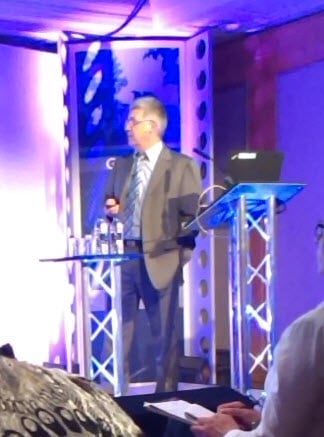Case Study: Launching Microsoft Project (and other things) at UPEC, Paris

What do you do if you need staff, students and the global research community to all have access to collaborate on projects, but without making everything complicated or publicly available? If you are Gérald Morin, you implement a suite of Microsoft solutions.
Gérald, Quality and Methods Manager at the Université Paris-Est Créteil (UPEC), delivered a case study at the Gartner PPM & IT Governance Summit last month. He explained that UPEC is the largest multi-disciplinary university in Paris with 30k students, 1600 professors, 13 schools and 31 research centres. Situated 20 minutes from the city centre, it runs international programmes and Masters courses taught in English as well.
Once they recognised that they needed a professional suite of tools to make university-wide (and global) projects work effectively, they defined their requirements. Gérald said these were:
- It must be simple
- It must be based on Office 365
- It must offer transparency
- It must manage user access, including for teams and individuals outside the university due to international research projects
- It must be quick to implement
- It must foster cross-team collaboration
- It must offer portfolio management
- It must contribute to the initiative to professionalise the way projects are managed at the university.
Addressing the challenges
Prior to embarking on this tool selection exercise, the university had no project management tools in place at all. They wanted to improve processes, tools, methods, training and reporting as well as introducing portfolio management. They might have had very little in place along these lines but Gérald said that there was already a clear governance model. “For UPEC governance is defined by the strategic documentation,” he explained. They needed to align their PPM solution with the university’s 5 year strategic plan and this formed the basis for how they set rules for managing projects.
Getting the basics right
The project team implemented several solutions to form the basis of their professional PPM suite:
- Microsoft Project Online
- Microsoft Project Professional
- Microsoft Project Web App
- Microsoft SharePoint Online
- Microsoft Lync
- CS Task Board App
- CS Milestone Trend Analysis App
That sounds a lot, but the aim was to start with a small amount of functionality and then add more. Document management, dashboards, access to reference materials and scheduling functionality was on the cards.
Between May and September 2013 the team introduced all this including setting up the guiding principles, methods and document repository. However, they knew that getting people to manage projects in the new way wouldn’t happen without some organisational
They introduced training about the culture of project management and then offered tool-specific training too.

Managing the portfolio
One of the biggest benefits, from what Gérald said, was that now the complete portfolio can be viewed on a single screen. The resources breakdown structure shows the hierarchy of UPEC. The President and Directors can see all projects, Directors of departments can see just their teams’ projects and so on.
New project opportunities are given a score which assists with prioritisation. This means that the staff and board can decide which projects they want to move ahead with – a degree of transparency the university didn’t have before.
What’s next?
So far the university has seen an increase in productivity, improved communications and time savings. They’ve added in scheduling tools now. The plan Gérald shared at the Summit said that they were going to carry out an audit of what had been achieved in June and would then add generic resource management assuming all was well. Then there are plans to check progress again in a formal way before adding in cost management as Phase 3.
“Sharing documents is very important,” he concluded. “The transparent project status lets you ask teams how they are managing their projects and to help them. You can be much closer to your teams.”
I attended the Summit as a guest of Genius Project.
